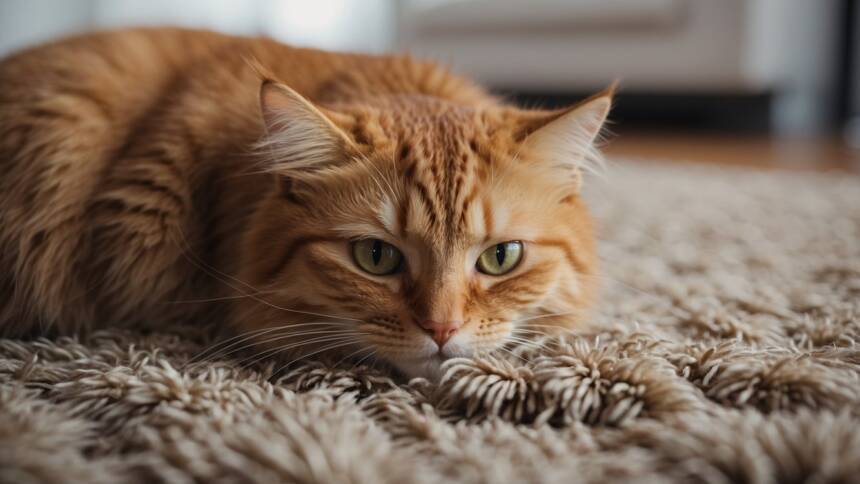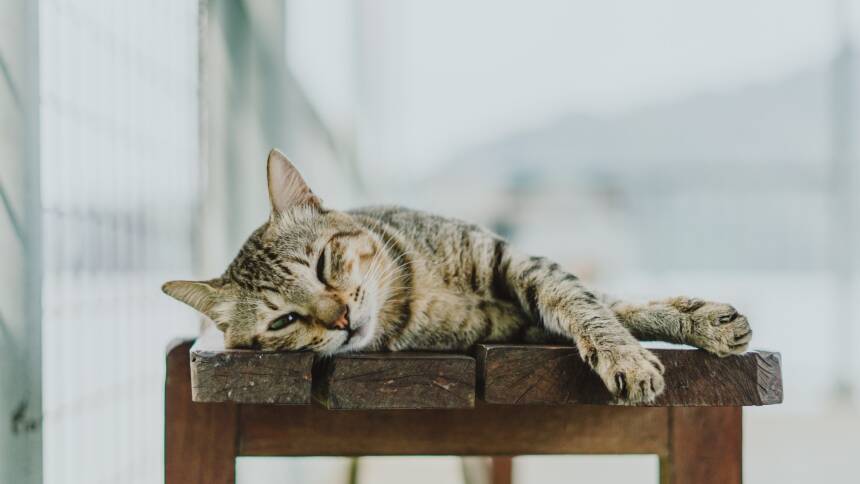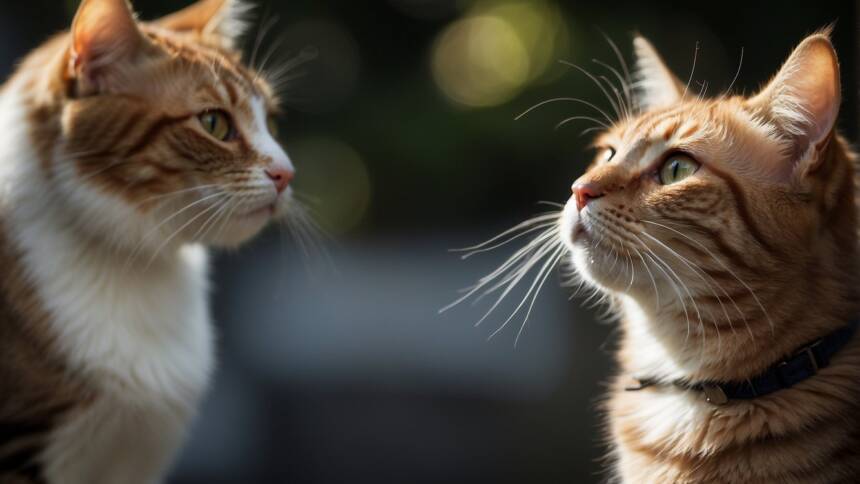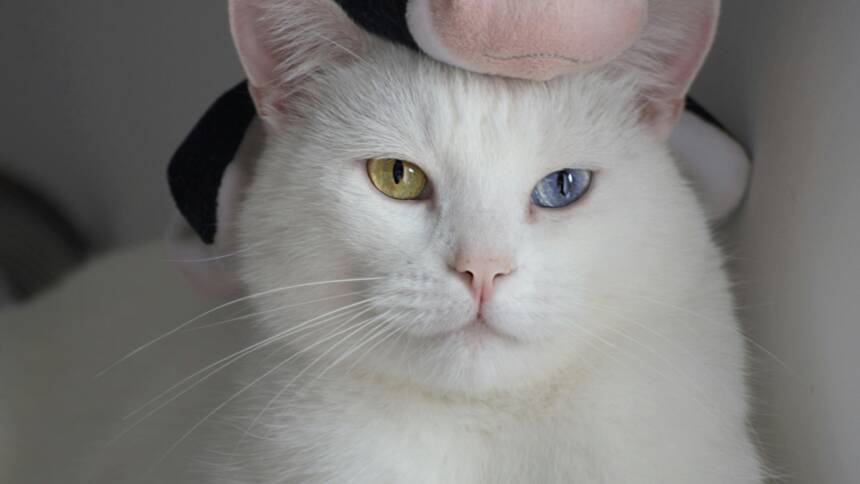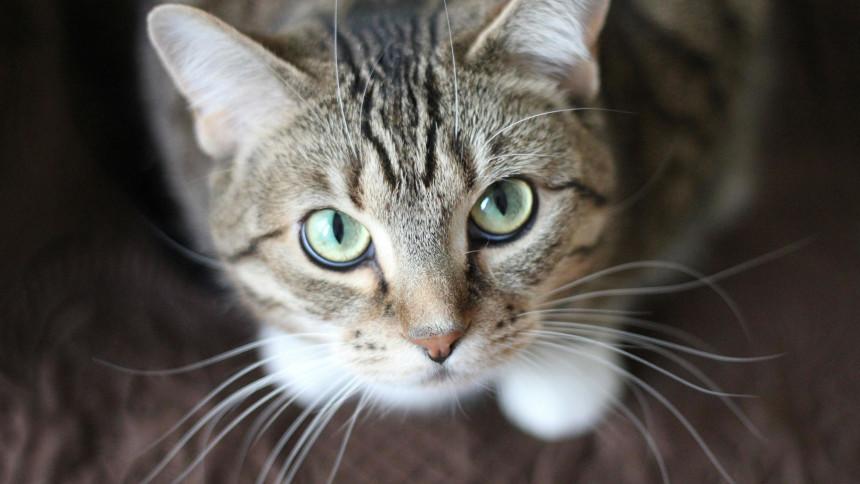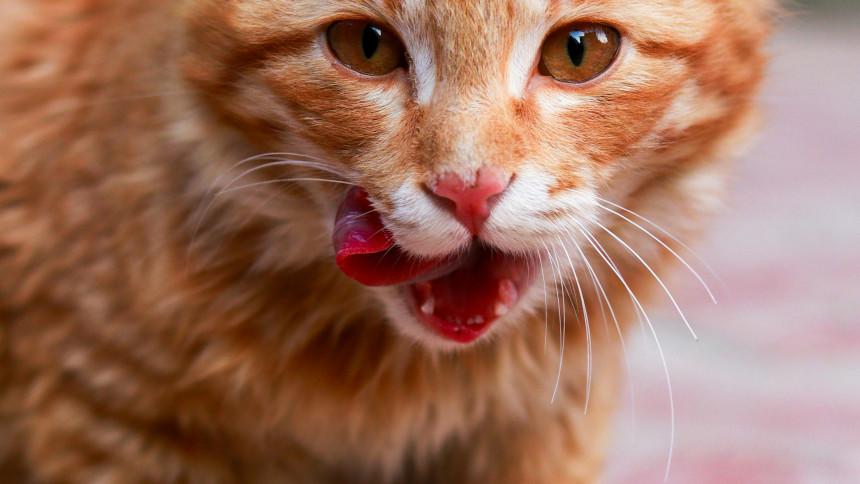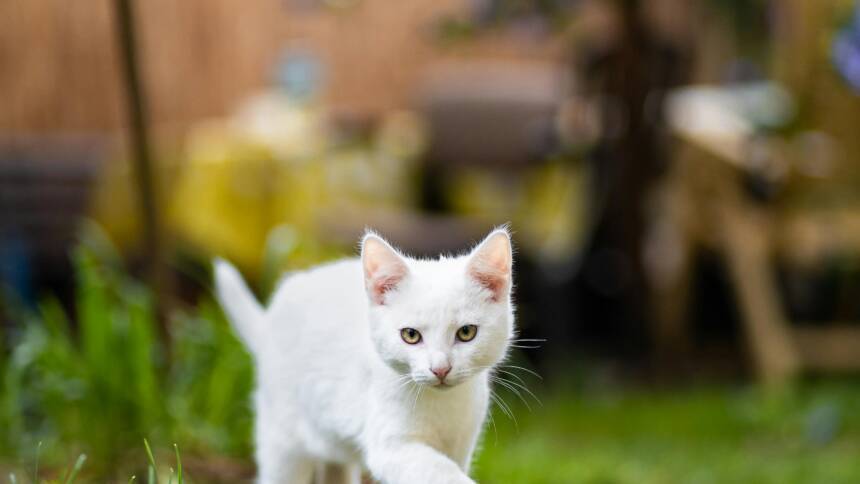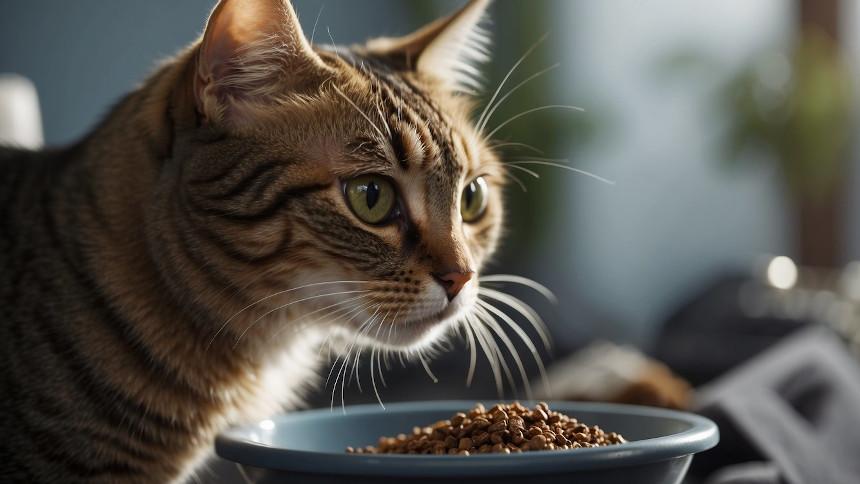When a cat keeps throwing up, it can be a cause for concern for any pet owner. Vomiting in cats can be an occasional and normal occurrence, often resulting from the ingestion of hair during grooming which leads to hairballs. However, when vomiting becomes frequent, it may indicate various underlying health issues. It’s important to observe the pattern and frequency of the vomiting, as well as the appearance of the vomit, to relay accurate information to a veterinarian.
The causes of vomiting in cats can range widely—from relatively benign issues like the ingestion of something that disagrees with their stomach, to more serious conditions such as food allergies, intestinal parasites, or even diseases such as kidney failure or diabetes. Acute instances of vomiting may be due to sudden dietary changes or the ingestion of harmful substances, while chronic vomiting, occurring over a longer period, could suggest a systemic disorder.
When addressing a cat’s vomiting, the key is to determine whether the vomiting is an isolated incident or part of a chronic condition. In either case, a veterinarian should evaluate persistent vomiting. They will likely conduct a thorough physical examination, possible lab tests, or imaging studies like X-rays to diagnose the underlying cause. Once a diagnosis is made, a treatment plan tailored to the cat’s specific condition can help manage or resolve the vomiting.
Understanding Cat Vomiting
Vomiting in cats is a symptom that can be indicative of a variety of underlying causes ranging from minor issues to serious health conditions. Cat owners must differentiate between normal behavior and signs of illness to ensure proper care.
Common Causes of Vomiting in Cats
The reasons for vomiting in cats can vary significantly. Some of the most common causes include:
- Hairballs: When cats groom themselves, they often swallow hair which can accumulate and form hairballs. These may be vomited up if they do not pass through the digestive system.
- Dietary indiscretion: Cats may vomit after eating too quickly, consuming too much food, or ingesting non-food items.
- Diseases: Illnesses such as kidney disease, liver disease, and hyperthyroidism can cause vomiting.
- Parasites: Internal parasites like worms can irritate the cat’s digestive system, leading to vomiting.
- Food allergies: Allergic reactions to certain ingredients in cat food can result in vomiting.
- Inflammatory Bowel Disease (IBD): This condition causes chronic irritation and inflammation of a cat’s gastrointestinal tract.
| Condition | Description | Symptoms beside Vomiting |
|---|---|---|
| Hairballs | Compacted hair forming in the stomach, often expelled by vomiting. | Coughing, hacking, gagging |
| Dietary indiscretion | Ingestion of inappropriate items or changes in diet. | Diarrhea, lethargy |
| Diseases | Conditions like kidney disease or hyperthyroidism affecting the cat’s overall health. | Weight loss, changes in appetite or thirst |
| Parasites | Internal worms or protozoa disrupting the digestive system. | Weight loss, visible worms in stool |
| Food allergies | Reaction to certain ingredients in the diet. | Itchy skin, gastrointestinal upset |
| Inflammatory Bowel Disease | Chronic intestinal inflammation leading to disruptions in normal digestion. | Diarrhea, weight loss |
Differences Between Vomiting, Regurgitation, and Retching
Understanding the differences between vomiting, regurgitation, and retching is critical in identifying the correct cause and treatment.
- Vomiting: An active process where a cat will often display signs of nausea (drooling, licking lips) prior to expelling the contents of the stomach and upper small intestine by powerful abdominal contractions.
- Regurgitation: A passive process where undigested food is expelled from the esophagus without the pronounced effort seen in vomiting. This typically happens shortly after the cat has eaten.
- Retching: This can be similar to vomiting but may produce no matter. It usually signals discomfort or irritation in the cat’s throat or upper airways rather than issues with the digestive system itself.
It’s important to note that vomiting blood, also known as hematemesis, requires immediate veterinary attention as it could indicate serious conditions such as ulcers, clotting disorders, or tumors.
Symptoms and Diagnosis
When a cat repeatedly vomits, it raises concerns about their health. Identifying the symptoms and obtaining a proper diagnosis are critical for treatment and recovery.
When to Seek Veterinary Help
Acute vomiting in cats – sudden onset of vomiting that may resolve quickly – might not require immediate veterinary attention if it is an isolated incident. However, chronic vomiting, which is frequent and persistent, necessitates medical attention, especially when accompanied by:
- Lethargy
- Diarrhea
- Weight loss
- Blood in vomit
- Dehydration
- Refusal to eat for more than 24 hours
Diagnosis Process
The process of diagnosing the cause of vomiting in cats typically involves a combination of medical history, physical examination, and diagnostic tests. Key steps in the diagnostic process include:
- A thorough medical history to understand the duration and frequency of vomiting
- Physical examination to check for abdominal pain, dehydration, or other physical signs
- Blood work to evaluate organ function and check for infections, anemia, or electrolyte imbalances
- Abdominal x-rays or ultrasound to identify any obstruction, foreign body, or structural abnormality
- Endoscopy, a procedure utilizing a camera to look inside the stomach and intestinal tract, may be recommended in certain cases
Blood work and imaging are especially important in determining the cause of vomiting and planning appropriate treatment.
Diet and Nutritional Factors
A cat’s well-being is closely tied to its diet, which should be of high quality and well-balanced. Dietary factors play a significant role in feline health, particularly in preventing and addressing episodes of vomiting.
Appropriate Cat Food
Ideal diet:
Cats require a diet high in protein and specific nutrients like taurine. The primary food should meet AAFCO standards, indicating it is complete and balanced for the cat’s life stage.
Special dietary needs:
Cats with health issues may need prescribed diets. Older cats often require senior formulas with different nutrient profiles.
Food-Related Issues
Spoiled cat food:
Cats can experience gastrointestinal upset from eating spoiled or contaminated food. Always check expiration dates and store cat food properly.
Dietary indiscretion:
Cats may vomit if they consume something they shouldn’t, such as human food or non-food items.
Food allergies:
Cats can develop allergies to certain proteins and ingredients in their food, which may cause vomiting. Common allergens include beef, dairy, and fish.
Rapid eating:
Cats that eat too quickly may regurgitate their food. Slow-feeder bowls can help pace their eating.
Changes in diet:
Abrupt changes to a cat’s diet can lead to stomach upset. Transition gradually over 7-10 days by mixing the old and new food.
Health Conditions Related to Cat Vomiting
Cat vomiting can be symptomatic of several underlying health conditions ranging from gastrointestinal issues to systemic diseases. Identification and understanding of these conditions are crucial for the well-being of the feline.
Serious Illnesses
Cancer: Cats may vomit due to tumors in the digestive tract, which impede normal digestion. Moreover, cancer can induce nausea and discomfort in other body areas, ultimately causing vomiting.
Kidney Disease: Common in older cats, it can lead to an accumulation of toxins in the bloodstream, resulting in nausea and vomiting.
Liver Disease: An afflicted liver can cause a decline in essential functions, including metabolism and detoxification, often manifesting as vomiting in cats.
Diabetes: This metabolic disorder can interfere with a cat’s capacity to process glucose, leading to bouts of vomiting.
Hyperthyroidism: An overactive thyroid gland can cause increased metabolism and consequently, gastrointestinal distress presenting as vomiting.
Inflammatory Bowel Disease: A group of chronic gastrointestinal disorders characterized by persistent inflammation can cause recurrent vomiting.
Gastrointestinal Disorders
Pancreatitis: The inflammation of the pancreas can disrupt digestion and cause cats to vomit.
Foreign Bodies: Ingestion of non-food items like toys or string can obstruct the gastrointestinal tract and result in vomiting.
Inflammatory Conditions: Conditions like gastritis and enteritis, caused by inflammation of the stomach and intestines respectively, are common reasons for feline vomiting.
Infections: Viral, bacterial, or parasitic infections in the digestive system can cause a cat to vomit.
It is important to monitor a cat’s vomiting patterns and seek veterinary care if one suspects any of these serious health conditions.
Treatment and Management
When a cat persistently vomits, a specific treatment plan and proper management are vital for recovery and to prevent future occurrences. The appropriate approach will depend on the underlying cause and may involve medications, potential surgery, or at-home care.
Medications and Therapies
For immediate relief, veterinarians often recommend antiemetics to control nausea and vomiting. If parasites are the root of the issue, they may prescribe deworming medication to eradicate worms such as roundworms or treat protozoan infections like Giardia. Cats with chronic conditions might require ongoing supportive care, which could include subcutaneous fluid therapy to combat dehydration. In the case of specific diseases like inflammatory bowel disease, chemotherapy or immunosuppressive drugs may be necessary.
Surgery and Emergency Measures
Should the vomiting stem from an obstruction or a severe health condition, surgery might be the recommended course of action. This measure is typically reserved for cases where non-invasive treatments have been ineffective or if there is a life-threatening situation that requires immediate intervention, such as a foreign body or tumor removal.
Home Care and Prevention
Owners can manage their cats’ condition and prevent future episodes by:
- Feeding a bland diet: Smaller, more frequent meals of easily digestible food can help alleviate digestive stress.
- Monitoring food intake to prevent overeating: Excessive food consumption can lead to vomiting.
- Employing hairball formulas in their diet to reduce hairball-induced vomiting.
- Ensuring that their cats are on a regular deworming schedule to prevent parasite-related vomiting.
By consistently implementing these measures, caregivers can foster a safe and comfortable environment for their cats, minimizing the risks of repeated vomiting episodes.
Other Considerations
While it’s important to address medical causes for a cat’s vomiting, it’s equally important to consider behavioral and environmental factors that could be influencing their health.
Behavioral Factors
Cats might experience vomiting as a result of dietary indiscretion, which includes eating too quickly, overeating, or consuming inappropriate foods or non-food items that they find appealing. In some cases, hairballs can also induce vomiting, particularly if the cat is not able to pass them through digestion. Cats and kittens with a tendency to groom excessively or those with long fur are particularly susceptible to hairballs.
Environmental Toxins
A cat’s environment could expose them to various toxins that might result in vomiting. It’s critical for cat owners to be aware of plants, human medications, chemicals, and other substances that could potentially cause poisoning if ingested. Intestinal parasites, which are sometimes more common in kittens or in cats that spend time outdoors, can also lead to vomiting and require different forms of treatment. Keeping the environment free of toxic materials and ensuring regular veterinary check-ups for parasite control are vital steps in preventing vomiting due to environmental causes.
Understanding the Cat Vomit Color Chart
The color of a cat’s vomit can be an important indicator of its health. Observing the various hues can help owners and veterinarians identify potential issues.
Interpreting Different Vomit Colors
- Brown liquid: Often the result of food coloring from the cat’s diet, particularly if the food was brown. However, it may also signify blood presence.
- Green vomit: This may indicate the ingestion of plants or could be symptomatic of a gastrointestinal obstruction.
- White foam: Usually means the stomach is empty. It can signal that the cat is vomiting on an empty stomach or it may be related to certain gastrointestinal conditions.
Associated Health Indicators
- Blood: Its presence in vomit may appear as a brownish shade and can indicate bleeding in the gastrointestinal tract.
- Mucus: Could be a sign of inflammation in the cat’s digestive system.
By paying attention to the color and consistency of their cat’s vomit, owners can provide valuable information to veterinarians, who can then proceed with an accurate diagnosis and appropriate treatment.
Conclusion
Feline vomiting can be a symptom of various conditions ranging from the benign to the serious. It is essential for cat owners to monitor their pets and discern between an isolated incident and recurrent episodes that necessitate medical intervention.
Key Takeaways:
- Occasional Vomiting: Cats may vomit occasionally due to hairballs or dietary indiscretion without it being a cause for alarm.
- Chronic Vomiting: Frequent vomiting could indicate a more severe health issue, such as gastrointestinal problems, infections, or even cancer.
- Hydration is Crucial: Vomiting can lead to dehydration, so ensuring a cat has access to water is imperative.
- Veterinary Attention: Persistent vomiting, lethargy, or vomiting of bile or blood warrants immediate veterinarian consultation.
Summary: If a cat’s vomiting is infrequent and the cat exhibits no other signs of distress, it may not require immediate veterinary care. However, if vomiting is persistent, or there are other symptoms like lethargy or disorientation, it’s important for the cat to be evaluated by a veterinarian. Early detection and treatment of the underlying cause is crucial for the cat’s health and wellbeing. Proper diagnosis may involve a thorough physical examination, and in some cases, additional diagnostic tests. It is crucial for pet owners to provide their cats with a quiet, stress-free environment to recuperate.
cat owners should always err on the side of caution and seek professional medical advice when in doubt.
